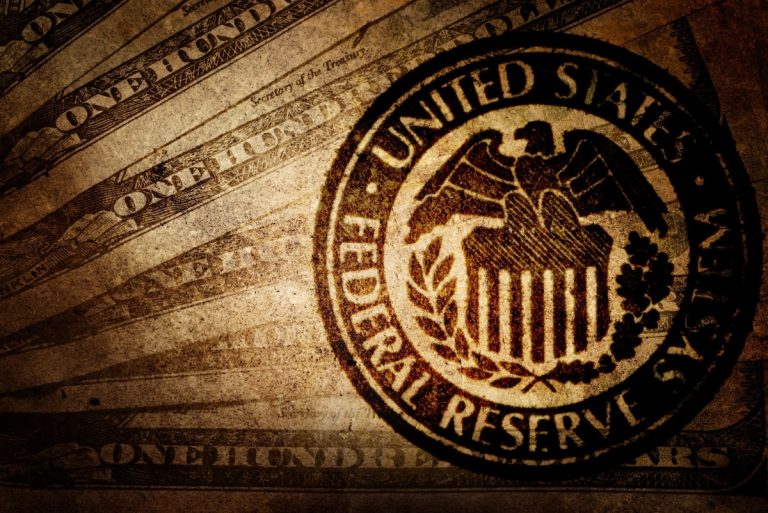Federal Reserve reporting is a niche beat within economy and business journalism. With the Fed expected to lower interest rates for the first time in four years on September 18, the Society for Advanced Business Editing and Writing (SABEW) hosted a virtual panel discussion on September 10 to explore the role that reporters play in explaining Fed policy changes to the general public.
Sarah Foster, principal U.S. economy reporter at Bankrate, moderated the discussion titled “Is the Federal Reserve behind the curve?”. The panel consisted of Amara Omeokwe, reporter at Bloomberg News; Rachel Siegel, business reporter at the Washington Post; and Jeanna Smialek, Federal Reserve and economics reporter at the New York Times.
With years of experience reporting on the Federal Reserve and the U.S. economy as a whole, they discussed why covering the Fed matters and their tips for navigating this unique beat.
Federal Reserve reporting – Why does it matter?
Fed reporting is stereotyped as being dry and narrow in scope. Siegel disputed this notion, saying that “the Fed is really an open door to write about the entire economy.”
Omeokwe added, “The Fed really does matter for the lives and the experiences of Americans, of everyday people… [it] really has a lot of implications for how people experience this world and the opportunities that people have.”
Beyond informing the average person of how the Fed’s policies impact their lives, reporters have the responsibility to keep a watchful eye on the Federal Reserve.
Smialek shared that economic journalists “are constantly watching to make sure [the Fed is] not actually making decisions for political reasons.” She added that while evidence suggests that the present-day Fed does not make politically influenced policy decisions, “that hasn’t always historically been true.”
Smialek went on to say that keeping the Fed accountable helps foster transparency and trust with the public, leading to higher credibility when journalists determine that there hasn’t been political influence in a policy decision.
Let’s talk about “Fed talk”
A challenge unique to reporting on the Federal Reserve is interpreting “Fed talk” or “Fed speak” which, according to Investopedia, is “a technique for managing investors’ expectations by making deliberately unclear statements regarding monetary policy to prevent markets from anticipating, and thus partially negating, its effects.”
Journalists, like Fed officials, have a great responsibility to choose their words carefully. Reporters’ predictions and interpretations of officials’ statements can influence the public’s understanding of economic events and their financial decisions. “It’s a real exercise in precision,” said Smialek.
Siegel remarked that “Fed speak” can also be an advantage to reporters. “There’s still, you know, a sort of contained world that we can at least focus on,” said Siegel. While the impacts of the Federal Reserve’s policies are wide-ranging, the scope of the Fed’s history, patterns, and precedents allows for reporters to be experts in those areas.
A balancing act – Reporting on hard data and how it affects real people
The Federal Reserve beat entails reporting extensively on hard data; it also requires human-centric, on-the-ground reporting. And sometimes, the numbers don’t reflect the reality felt by the public.
“A cornerstone of journalism is empathy, and I think if people are expressing to you that this economy is painful for them even if the numbers say that inflation is coming down and the job market is strong, it is my job as a journalist to listen,” said Omeokwe.
She suggested asking your source probing questions about their economic beliefs and perceptions, as it’s a vital practice in order to understand the discrepancies between public opinion and the numbers and trends that economists see.
“I think just bringing empathy to my work and not trying to beat people down with facts and figures… but just allowing people to tell their stories I think is really important,” Omeokwe said.
Tips on how to navigate the Federal Reserve beat
Understanding the nuances of “Fed speak” from a historical perspective is crucial to accurately interpreting current official statements from the Federal Reserve. Smialek said, “You end up having to do a lot of Fed history… to make sure that you understand how they’ve used words in the past, what those words meant, what the context is because a lot of times they are self-referential.”
Omeokwe suggested paying attention to what regional Fed presidents have to say about specific issues impacting their districts. She said, “As economics reporters, we are obviously very focused on the hard data because that matters, but I think I’m learning more and more that some of this anecdotal data is actually really important as well.”
For a reliable source of economic data in the U.S., Smialek recommended referencing the Federal Reserve Economic Data, better known as FRED. She also mentioned its counterpart FRASER, a digital library of the Federal Reserve’s history, for important context on the Fed and its policies over the decades.











